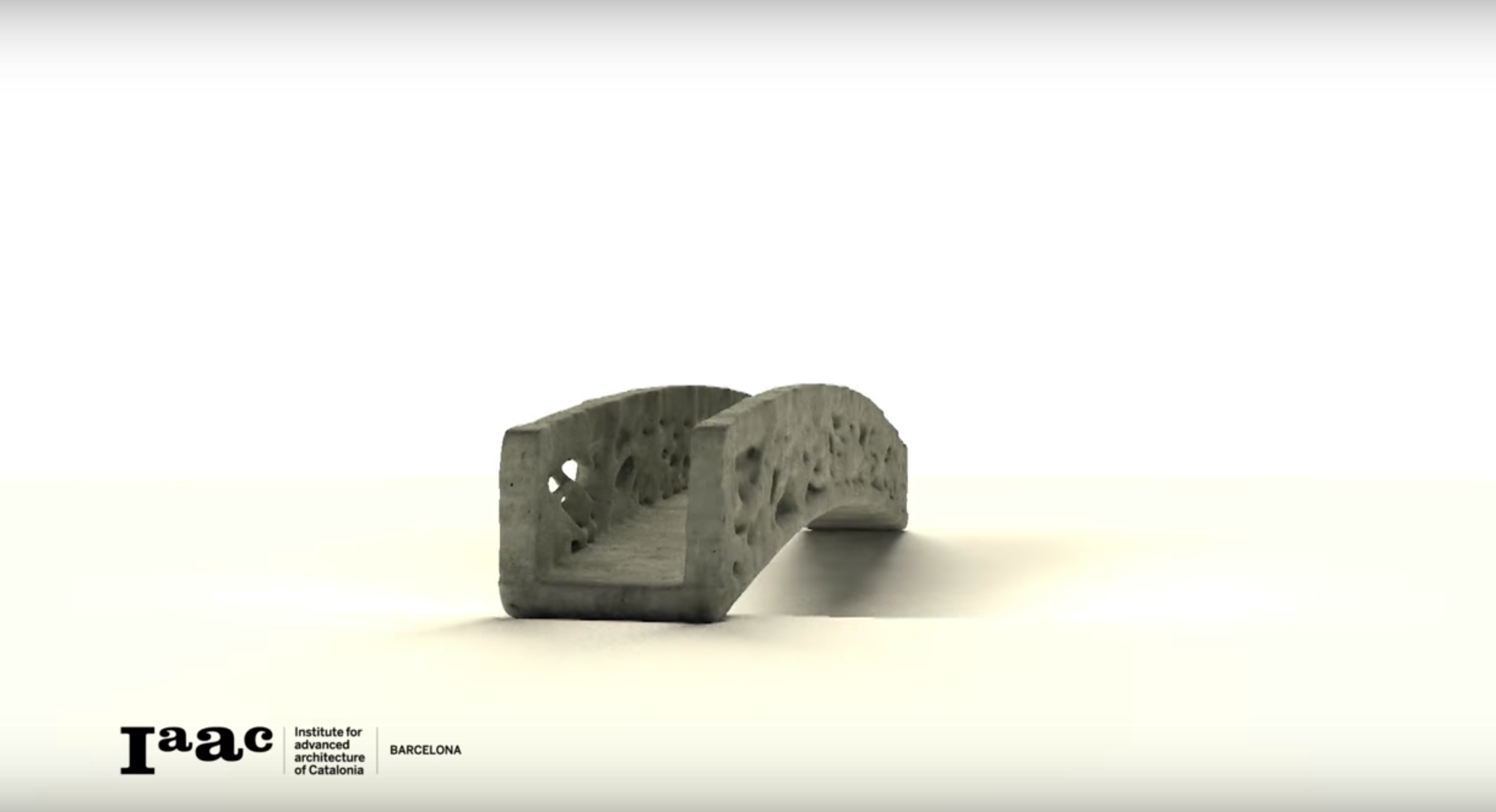
With Valentine’s Day approaching, it’s appropriate that hearts are being 3D printed around the globe. Hands are also being printed, and bridges, and fish-grabbers… honestly, it’s been a pretty exciting week in the world of what’s being digitally manufactured. We feel a little bad for the fish, though.
Bridging the gap
The Daily Dot’s John-Michael Bond wrote about the unveiling of the world’s first 3D printed bridge which has been built in Castilla-La Mancha park in Alcobendas, Spain. The structure, designed by the The Institute of Advanced Architecture of Catalonia (IAAC), was specifically inspired by complex forms found in nature, which helped to optimize the bridge’s strength in proportion to the material used (micro-reinforced concrete). The final result was a 40-foot-long footbridge constructed from eight separate 3D printed parts. Appropriately, it’s pretty odd-looking as bridges go, but it’s an incredibly cool application of 3D printing in the field of civil engineering.
Video courtesy The Institute for Advanced Architecture of Catalonia’s YouTube page
A story with a whole lot of heart
CTV News covered the story of a group of doctors at Toronto’s Hospital for Sick Children using a 3D printed replica of a six-month-old’s heart to practice before a complicated heart surgery. The model was created using scans of the patient’s heart and allowed for a successful surgery– making it a perfect example of the ways in which 3D printing is literally saving lives. This practice is becoming more common around the world: Thompson Reuters Zawya also recently covered the way in which doctors in India are using 3D printed replicas of hearts.
Let’s give these kids a hand
Jesse Leavenworth at the Hartford Courant wrote about a group of twenty middle school students in Connecticut volunteering to assemble “raptor hand” prosthetics as part of The Hand Challenge, a branch of the e-NABLE Community, a global network that leverages volunteers to create prosthetic hands using their 3D printers.
Go Fish
Nathaniel Scharping at Discover Magazine describes how researchers at MIT have 3D printed some squishy robots which are not only mostly composed of water (and polymers), but are also powered by pumped water. The resulting robots are strong, flexible, and fast, allowing them to grab a (very confused looking) goldfish. These machines are going to be key for medical applications in the future, so it’s a development to keep an eye on.


